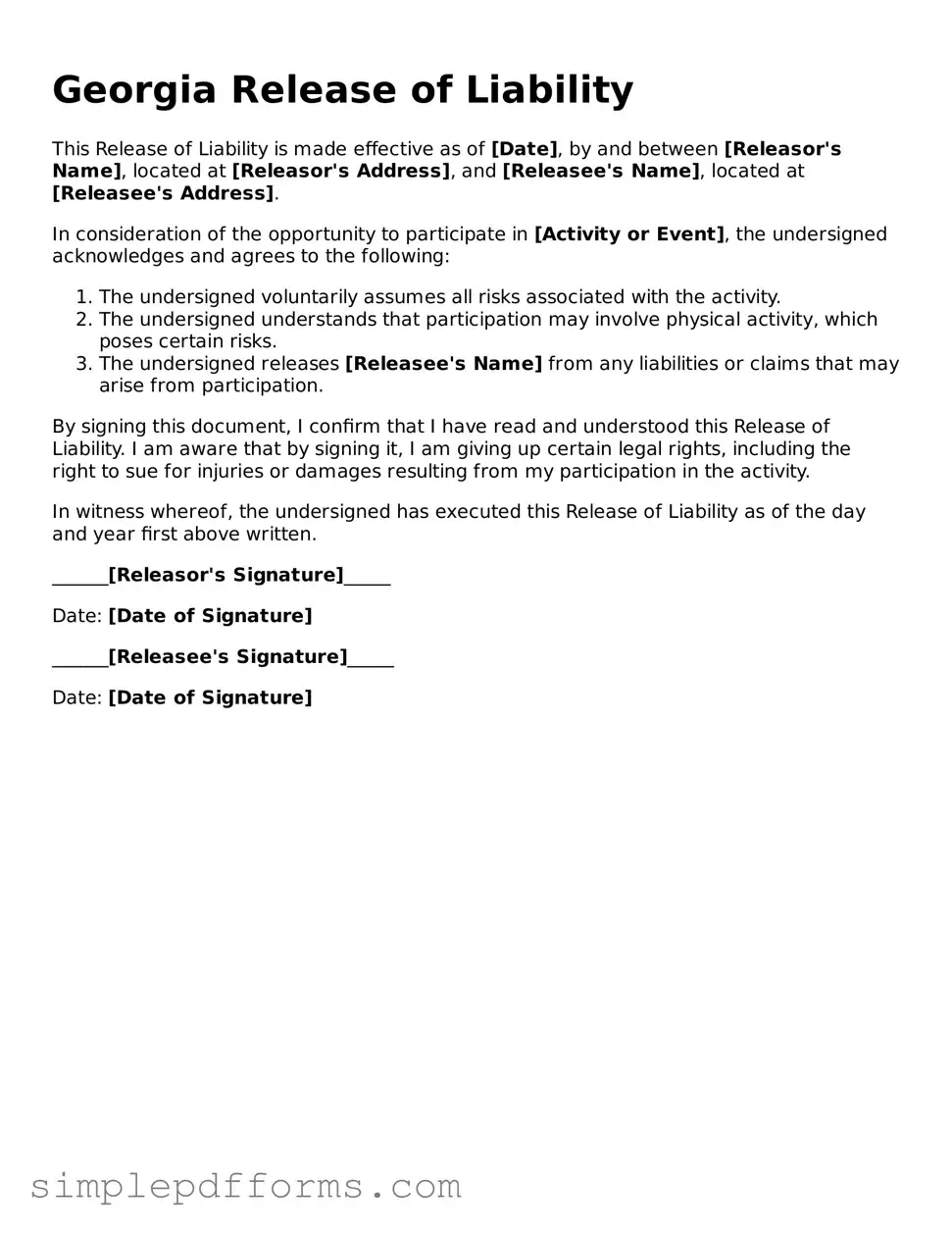Attorney-Verified Release of Liability Document for Georgia State
The Georgia Release of Liability form is a legal document designed to protect individuals and organizations from claims of negligence. By signing this form, participants acknowledge the inherent risks associated with an activity and agree to waive their right to sue for injuries that may occur. This form is commonly used in various settings, including sports, recreational activities, and events, ensuring that all parties understand their responsibilities and the risks involved.
Open Release of Liability Editor Now
